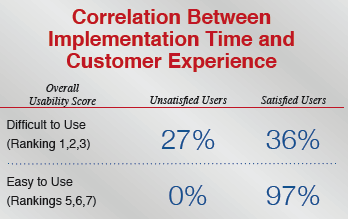Building A Lead Management Strategy A Critical First Step For B2B Marketers
Analysts establishing best practices guidelines for early stage adopters
For those organizations in the early phases of demand generation, the focus usually fast forwards to getting as many leads in the door as quickly as possible. Therefore, all too often companies rush into short-term fixes to fill up their sales funnel, without first building an over-arching demand generation strategy.
Industry analysts emphasize that the first step for companies, especially those with complex sales cycles, should be to establish process and strategies for lead management and demand generation. “The development of an effective lead management strategy, including workflow, offer strategy, and associated e-mail and landing page creative is critical,” says Howard Sewell, president of Connect Direct (CDI), a full-service agency that specializes in demand generation for high-technology companies.
While some companies are looking to agencies like CDI or software providers for a quick fix to their lead generation needs, Sewell points out that outside solutions don’t replace the need for strategy. “Without the implementation of best practices in areas like workflow, frequency, offer strategy, and creative, a marketing automation solution can not only be ineffective, it can actually hinder sales and damage your brand,” he says.
PRACTICING BEST PRACTICES
One firm taking the lead on establishing best practices and help companies adopt a comprehensive demand generation strategy is Vancouver-based Demand Metric, a management advisory firm focused on sales & marketing strategy for mid-sized firms. Demand Metric recently published its comprehensive Best Practices Report: Automation & Measuring Demand Generation, which includes a Demand Generation Vendors Matrix, a Best Practices guide and a Lead Generation Scorecard.
Jesse Hopps, CEO of Demand Metric, points out that once firms have an understanding of the full scope of solutions and best practices, they can see the real benefits of integrated demand generation. “In the past, marketers were using disparate systems for email marketing, website analytics, direct mail, online advertising, etc, making it extremely difficult to accurately track the results of integrated marketing efforts,” Hopps says. “New advances in Demand Generation technology are providing mid-sized enterprises with systems that can automate manual marketing processes and drive efficiency.”
Working with hundreds of different firms, Hopps says he has consistently seen better success from those companies that take the time to evaluate best practices and formulate a detailed strategy. “From a process standpoint, top firms align well with marketing and have clearly documented sales processes that map out the key actions, sales tools, and other criteria for promoting opportunities to the next stage in the pipeline,” he says.
“Firms that have adopted sales force automation (CRM) systems that are tightly integrated with marketing automation tools naturally spend more time on better qualified leads,” Hopps adds. “Sales/marketing technologies that provide automated lead scoring & nurturing functionality, and real insight into a prospects implicit buying behaviors, (webpage views, email opens, collateral downloads etc), has resulted in more targeted sales communications and increased win rates for organizations that are aware of trends and best practices.”
Once companies have a strategy in place, Sewell says they are then ready to tackle the next phases of executing on effective messaging and delivering integrated campaigns. “Marketing executives will assume that anyone can write and design an e-mail, including their in-house staff, and of course that’s true. However, a professionally-crafted e-mail, landing page, and lead nurturing strategy can have a significant, cumulative impact on response, registrations, leads, and sales,” Sewell says.
Recently named one of B2B Magazine’s “Top 100 Agencies” for 2008, Sewell says that lead management, and by extension: marketing automation, is the fastest-growing part of CDI’s business. The firm provides a turnkey, managed lead management solution based on the Marketo marketing automation platform, as well as assisting clients who already have marketing automation systems in place by developing effective lead nurturing strategies, programs, and creative.
- Written by Andrew Gaffney
- Category: Feature Articles
- Hits: 3363


 The early adopters of new technology often benefit from being on the cutting edge, but they also live through the pains of being the first in line. To get some first-hand perspective from the early adopters of marketing automation systems, DemandGen Report recently surveyed more than 50 executives from different BtoB organizations who have already implemented a marketing solution.
The early adopters of new technology often benefit from being on the cutting edge, but they also live through the pains of being the first in line. To get some first-hand perspective from the early adopters of marketing automation systems, DemandGen Report recently surveyed more than 50 executives from different BtoB organizations who have already implemented a marketing solution.